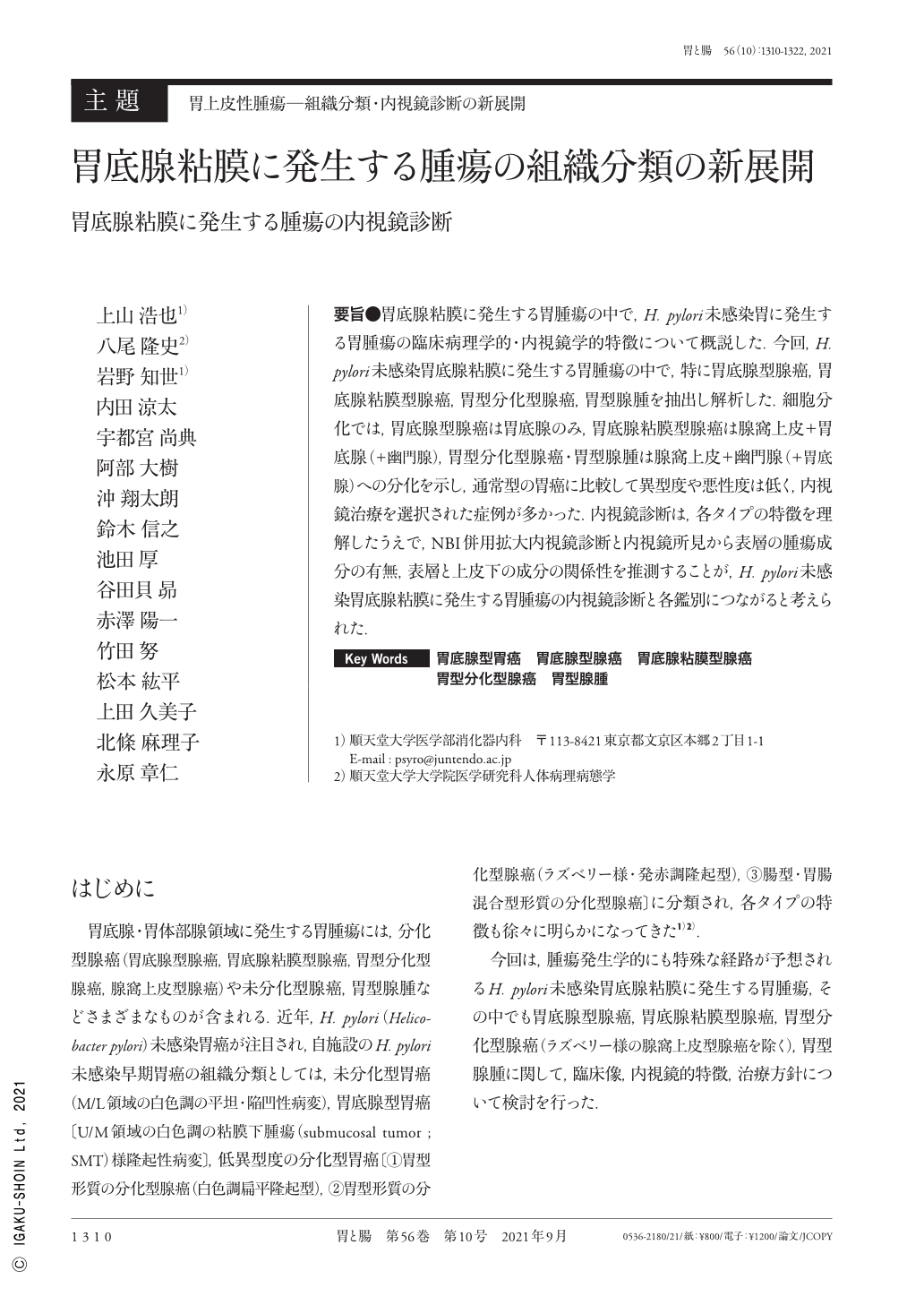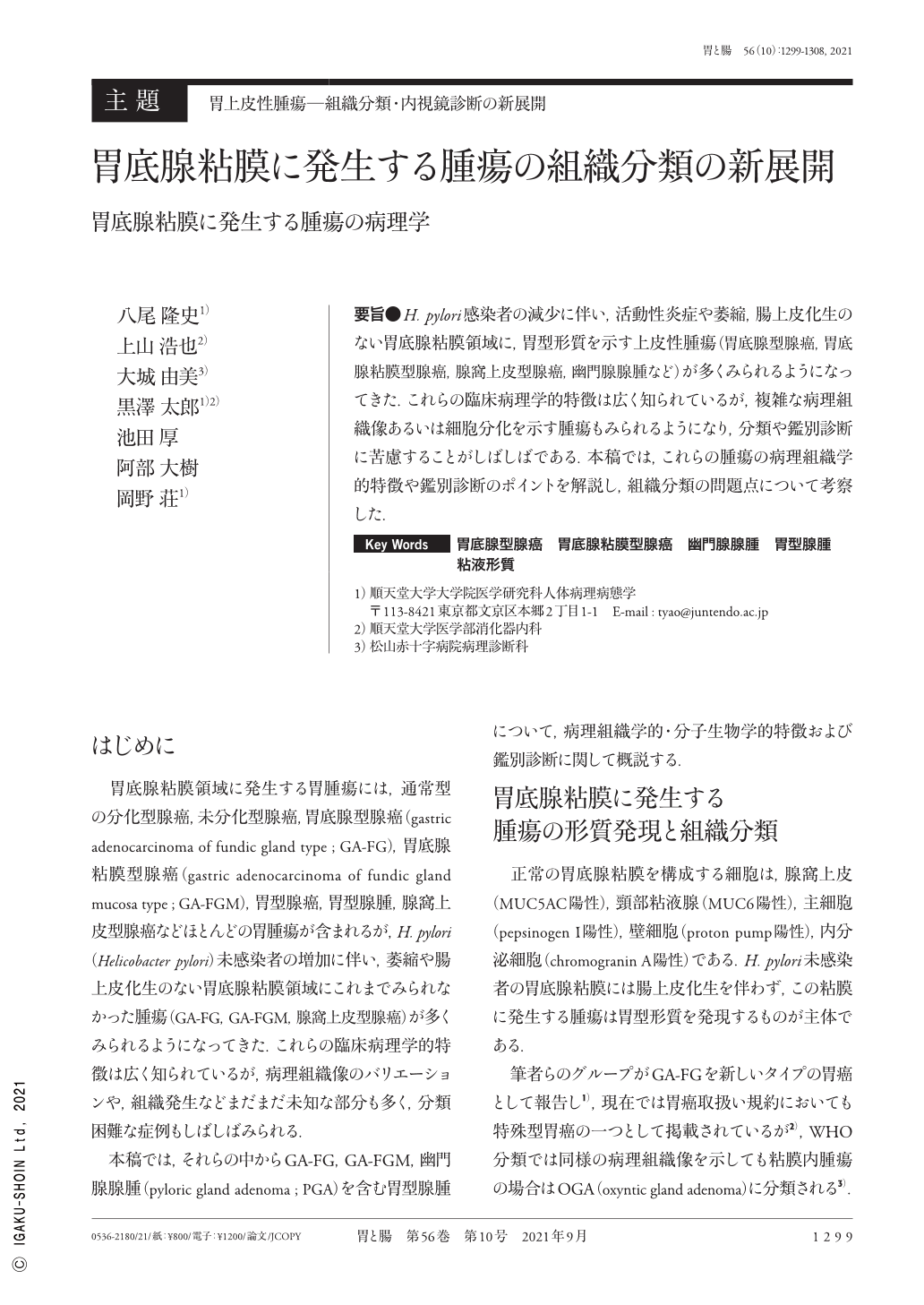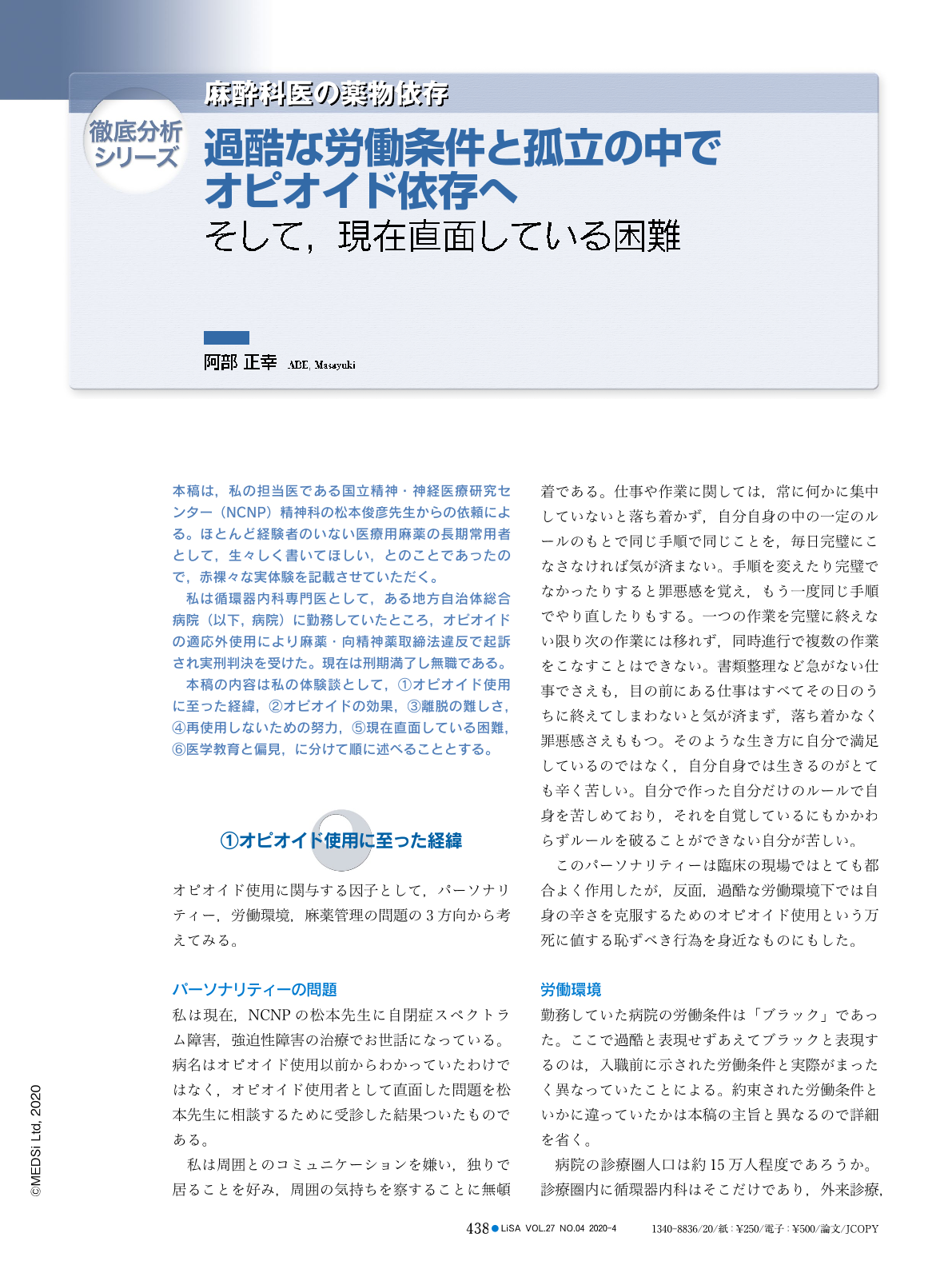3 0 0 0 OA 急性冠症候群回復期リハビリテーションにおける脂質プロファイルと運動耐容能との関係
- 著者
- 松岡 悟 庄司 亮 阿部 元 田村 芳一 齊藤 崇
- 出版者
- 一般社団法人 日本農村医学会
- 雑誌
- 日本農村医学会雑誌 (ISSN:04682513)
- 巻号頁・発行日
- vol.70, no.5, pp.437-447, 2022 (Released:2022-02-20)
- 参考文献数
- 23
急性冠症候群(ACS)において回復期(第Ⅱ相)リハビリテーションの脂質プロファイルに対する効果と運動耐容能に対する効果との関連を明らかにするため,PCIに成功し回復期リハビリテーションを実施したスタチン服用中のACS連続104例(62±8歳,男性86例)に対し,リハビリテーション前後のCPXと同時期の脂質データについて後ろ向きに検討した。4か月間のリハビリテーションにより,予測値に対する%ATは67±11%から76±12%へ有意に増加(p<0.001),HDLCは41.5±11.8mg/dLから51.4±12.6mg/dLへ有意に増加(p<0.001),LDLC/HDLC比は2.3±0.8から1.8±0.6へ有意に低下した(p<0.001)。HDLC変化量と%AT変化量との間に正の相関を(r=0.463),HDLC変化率と%AT変化率との間にも正の相関を(r=0.485)認めた。またLDLC/HDLC比変化量と%AT変化量との間に負の相関を(r=-0.379),LDLC/HDLC比変化率と%AT変化率との間にも負の相関を(r=-0.374)認めた。重回帰分析の結果,HDL変化量およびLDLC/HDLC比変化量の関連要因として%AT変化量が,HDL変化率およびLDLC/HDLC比変化率の関連要因として%AT変化率が抽出された。以上により,ACS患者に対するスタチン服用下の回復期リハビリテーションにおいて,脂質プロファイルの改善と%ATの改善とが関連することが示された。
- 著者
- 上山 浩也 八尾 隆史 岩野 知世 内田 涼太 宇都宮 尚典 阿部 大樹 沖 翔太朗 鈴木 信之 池田 厚 谷田貝 昴 赤澤 陽一 竹田 努 松本 紘平 上田 久美子 北條 麻理子 永原 章仁
- 出版者
- 医学書院
- 巻号頁・発行日
- pp.1310-1322, 2021-09-25
要旨●胃底腺粘膜に発生する胃腫瘍の中で,H. pylori未感染胃に発生する胃腫瘍の臨床病理学的・内視鏡学的特徴について概説した.今回,H. pylori未感染胃底腺粘膜に発生する胃腫瘍の中で,特に胃底腺型腺癌,胃底腺粘膜型腺癌,胃型分化型腺癌,胃型腺腫を抽出し解析した.細胞分化では,胃底腺型腺癌は胃底腺のみ,胃底腺粘膜型腺癌は腺窩上皮+胃底腺(+幽門腺),胃型分化型腺癌・胃型腺腫は腺窩上皮+幽門腺(+胃底腺)への分化を示し,通常型の胃癌に比較して異型度や悪性度は低く,内視鏡治療を選択された症例が多かった.内視鏡診断は,各タイプの特徴を理解したうえで,NBI併用拡大内視鏡診断と内視鏡所見から表層の腫瘍成分の有無,表層と上皮下の成分の関係性を推測することが,H. pylori未感染胃底腺粘膜に発生する胃腫瘍の内視鏡診断と各鑑別につながると考えられた.
要旨●H. pylori感染者の減少に伴い,活動性炎症や萎縮,腸上皮化生のない胃底腺粘膜領域に,胃型形質を示す上皮性腫瘍(胃底腺型腺癌,胃底腺粘膜型腺癌,腺窩上皮型腺癌,幽門腺腺腫など)が多くみられるようになってきた.これらの臨床病理学的特徴は広く知られているが,複雑な病理組織像あるいは細胞分化を示す腫瘍もみられるようになり,分類や鑑別診断に苦慮することがしばしばである.本稿では,これらの腫瘍の病理組織学的特徴や鑑別診断のポイントを解説し,組織分類の問題点について考察した.
3 0 0 0 IR 戦前の日本における対ユダヤ人政策の転回点
- 著者
- 阿部 吉雄
- 出版者
- 九州大学大学院言語文化研究院
- 雑誌
- 言語文化論究 (ISSN:13410032)
- 巻号頁・発行日
- no.16, pp.1-13, 2002
Nach der Besatzung der Mandschurei im Jahre 1932 entführten der japanische Geheimdienst (Tokumukikan), die japanische Militärpolizei (Kempeitai) und die reguläre japanische Polizei im gesamten Besatzungsgebiet reiche Chinesen und Juden, um Lösegelder zu erpressen. Im Jahre 1933 wurde z. B. der französische Staatsangehörige Simon Kaspe, ein begabter Pianist und Sohn eines reichen Juden, in Harbin von Weißen Russen, die für den japanischen Geheimdienst arbeiteten, entführt und nach den gescheiterten Lösegeldverhmdlungen ermordet. Bei dieser Affäre versteckten japanische Behörden zuerst die Täter, dann verhinderten sie eine gerechte Untersuchung des Falles und machten schließlich die Verurteilung der Täter ungültig. Dies hatte zur Folge, dass einige tausend Juden Harbin, wo es die größte jüdische Gemeinde in Fernost gab, verließen. Zu jener Zeit plante Japan jüdische Techniker aus Deutschland, in dem unter der nationalsozialistischen Herrschaft die Juden verfolgL wurden, und jüdisches Kapitel aus den USA zur Entwicklung der Mandschurei in das Besatzungsgebiet zu holen. Aber aufgrund heftiger Proteste von Juden aus der Shanghai-Konzession, den USA und England gegen die Kaspe-Affäre entschloß sich Japan, die in seinem Besatzungsgebiet lebenden Juden zu schützen. Japan wollte auf diese Weise vermeiden, den neugeschaffenen Vasallenstaat Mandshu-Tikuo als antisemitisch erscheinen sollten. Diese Politik möglichte es, dass Tausende von Juden aus Europa über die Mandschurei und Japan in die USA emigrierten und 18.000 jüdische Flüchtlinge in der Shanghai- Konzession Zuflucht fanden; was Japan eigentlich nicht beabsichtigt hatte.
3 0 0 0 OA 越境と変容―グローバル化時代におけるスラヴ・ユーラシア研究の超域的枠組みを求めて
- 著者
- 沼野 充義 三谷 惠子 松里 公孝 柳原 孝敦 青島 陽子 小松 久男 乗松 亨平 楯岡 求美 井上 まどか 亀田 真澄 下斗米 伸夫 坂庭 淳史 池田 嘉郎 湯浅 剛 阿部 賢一 安達 祐子 加藤 有子 平野 恵美子 羽場 久美子 柴田 元幸
- 出版者
- 東京大学
- 雑誌
- 基盤研究(A)
- 巻号頁・発行日
- 2013-04-01
ソ連解体後のスラヴ・ユーラシアの変容と越境の様々な様相に焦点を合わせた包括的な研究である。グローバル化時代の世界情勢を考慮に入れ、新たな研究の枠組みの構築を目指した。代表者および19名の分担者の専門は、地域的にはロシア、ウクライナ・コーカサス・中央アジア、中・東欧から、東アジアや南北アメリカに及び、分野も文学・言語・芸術・思想・宗教・歴史から政治・経済・国際関係に至るまで人文社会科学全体にわたる。このようなグループによる超域的・学際的アプローチを通じて、国際学会の組織に積極的に関わり、日本のスラヴ・ユーラシア研究の国際的発信力を高めるとともに、この分野における国際交流の活性化に努めた。
3 0 0 0 OA 東京の地位 ―世界都市との比較において―
- 著者
- 阿部 和俊
- 出版者
- 公益社団法人 東京地学協会
- 雑誌
- 地学雑誌 (ISSN:0022135X)
- 巻号頁・発行日
- vol.123, no.2, pp.315-322, 2014-04-25 (Released:2014-05-16)
- 参考文献数
- 8
- 被引用文献数
- 6 4
This paper evaluates the status of Tokyo among major cities of Japan and compares Tokyo with major cities of the world in terms of head and branch offices. First, the paper analyzes major cities of Japan from the standpoint of the head offices and branch offices of large private firms. The main focus of this analysis of Japan is the period from 1950 to 2010. Clearly, the largest number of head offices is found in Tokyo. This is followed by Osaka. However, it should be noted that in recent years, more and more firms have adopted the system of having multiple head offices. Including such firms, the number of private firms with head offices in Tokyo is steadily increasing. Tokyo houses the large number of branch offices, as well. As is the case for head offices, the city with the second largest number of branch offices is Osaka. The difference in status between Tokyo and other cities, particularly Osaka, has increased in recent times. The status of Tokyo has become more elevated with Osaka losing ground. Second, the paper compares the situation in Tokyo with major cities of Korea, France, the United Kingdom, Thailand, The United States of America, Germany, and India. Tokyo, Seoul, Paris, Bangkok, and London gravitate to the same category in that these capital cities are strong in terms of office locations. On the other hand, within The United States of America, Germany, and India, capital cities are not so strong in terms of numbers. The important factor affecting these results is the political system. Namely, in the cases of federated states, the status of capital cities is not as high. On the other hand, in the cases of non-federated states, the status of capital cities is very high.
3 0 0 0 猫の鳴き声の音高特性の分析と生成
3 0 0 0 OA イデイッシュ語およびユデオ・エスパニョル語による歌詞資料 : 「宗教文化論」のための教材
- 著者
- 阿部 包
- 出版者
- 藤女子大学
- 雑誌
- 人間生活学研究 (ISSN:13467069)
- 巻号頁・発行日
- vol.16, pp.41-73, 2009-03
- 著者
- 阿部 正幸
- 出版者
- メディカル・サイエンス・インターナショナル
- 巻号頁・発行日
- pp.438-442, 2020-04-01
本稿は,私の担当医である国立精神・神経医療研究センター(NCNP)精神科の松本俊彦先生からの依頼による。ほとんど経験者のいない医療用麻薬の長期常用者として,生々しく書いてほしい,とのことであったので,赤裸々な実体験を記載させていただく。 私は循環器内科専門医として,ある地方自治体総合病院(以下,病院)に勤務していたところ,オピオイドの適応外使用により麻薬・向精神薬取締法違反で起訴され実刑判決を受けた。現在は刑期満了し無職である。 本稿の内容は私の体験談として,①オピオイド使用に至った経緯,②オピオイドの効果,③離脱の難しさ,④再使用しないための努力,⑤現在直面している困難,⑥医学教育と偏見,に分けて順に述べることとする。
3 0 0 0 50 カルタミンの化学構造について
- 著者
- 小原 平太郎 小野寺 準一 阿部 敏
- 出版者
- 天然有機化合物討論会実行委員会
- 雑誌
- 天然有機化合物討論会講演要旨集
- 巻号頁・発行日
- vol.19, pp.380-385, 1975
In the previous papers, we have reported that the conventional structures of carthamin, presented by Kuroda and Seshadri, should be reexamined from the comparison of its properties with those of their synthetic analogs. The IR, UV, PMR, and ^<13>C-NMR spectral data and the chemical evidences suggested that carthamin is humulone-like C-glycosyl compound, having two p-hydroxycinnamoyl groups and one unsaturated methine group. On the bases of these results and the comparison of the spectral data with those of some synthetic analogs, we will propose a new structure (11) for carthamin.
3 0 0 0 IR 「引揚げ」という歴史の問い方(下)
- 著者
- 阿部 安成 加藤 聖文
- 出版者
- 滋賀大学経済学会
- 雑誌
- 彦根論叢 (ISSN:03875989)
- 巻号頁・発行日
- no.349, pp.51-68, 2004-07
3 0 0 0 IR 「引揚げ」という歴史の問い方(上)
- 著者
- 阿部 安成 加藤 聖文
- 出版者
- 滋賀大学
- 雑誌
- 彦根論叢 (ISSN:03875989)
- 巻号頁・発行日
- vol.348, pp.129-154, 2004-05
3 0 0 0 IR 『ソロモンの哲学の書』(Liber de philosophia Salomonis)
- 著者
- 阿部 晃平 アベ コウヘイ Kouhei Abe
- 出版者
- 立教大学史学会
- 雑誌
- 史苑 (ISSN:03869318)
- 巻号頁・発行日
- vol.81, no.1, pp.155-182, 2020-12
3 0 0 0 地球温暖化の科学―遅れて来た懐疑論の虚妄と罪(話題)
- 著者
- 阿部 修治
- 出版者
- 一般社団法人 日本物理学会
- 雑誌
- 日本物理学会誌 (ISSN:00290181)
- 巻号頁・発行日
- vol.65, no.4, pp.260-265, 2010
- 参考文献数
- 36
- 著者
- 米田 政明 阿部 永
- 出版者
- 北海道大学
- 雑誌
- 北海道大学農学部邦文紀要 (ISSN:03675726)
- 巻号頁・発行日
- vol.9, no.4, pp.265-276, 1976-03-31
3 0 0 0 肩凝りに対する磁気による治療効果の検討
- 著者
- 金井 成行 岡野 英幸 織田 真智子 阿部 博子
- 出版者
- 一般社団法人 日本ペインクリニック学会
- 雑誌
- 日本ペインクリニック学会誌 (ISSN:13404903)
- 巻号頁・発行日
- vol.3, no.4, pp.393-399, 1996
<b>目的</b>: 肩凝りに対する磁気治療器の効果を皮膚温度, 深部温度, 皮膚血流量など客観的な方法を用いて検討した. <b>方法</b>: 肩凝りの強い患側とその反対側 (健側) の皮膚温度をサーモグラフィで測定した. また, 磁気治療器の効果は, 二重盲検法により無作為に患者を磁気治療器貼付群とダミー貼付の対照群に分け, 4日間の疼痛, 筋硬結の症状, 皮膚温度, 深部温度, 皮膚血流量を測定した. <b>結果</b>: 肩凝りを訴える患者は, 肩の強く凝る部位の皮膚温が反対側より低い者 (低温群), 高い者 (高温群), 両側に差のみられない者 (均一群) の3種類に分類され, 罹病期間が短いほど高温群が多く, 罹病期間が長くなると低温群が増加した. 罹病期間1カ月以上の低温群に磁気治療器を貼付すると貼付24時間目から疼痛, 筋硬結の症状が改善されはじめ, 48時間後には皮膚温度, 深部温度も有意の上昇を示した. 血流量の有意な増加は72時間後にみられた. <b>結論</b>: 磁気治療器は, 患部が低温化した凝りの部位を明らかに改善し, 皮膚温度, 深部温度, 血流量を上昇させた.
3 0 0 0 OA 帰り道はなぜ短く感じる?─リターントリップエフェクトへのエコロジカル・アプローチ─
- 著者
- 阿部 廣二 山本 敦 古山 宣洋
- 出版者
- 日本生態心理学会
- 雑誌
- 生態心理学研究 (ISSN:13490443)
- 巻号頁・発行日
- vol.11, no.1, pp.27-30, 2018-07-01 (Released:2020-12-01)
- 参考文献数
- 8
往復の旅程において,往路よりも復路のほうが短いと感じる,リターントリップエフェクトと呼ばれる現象がある.本稿では,まずリターントリップエフェクトの発生メカニズムについて,先行研究のレビューを行った.その後,先行研究の問題点を指摘した上で,生態心理学を理論仮説として,リターントリップエフェクトの生成メカニズムを理論的に検討した.その結果,1)往路と復路において同一対象であっても知覚される面が異なる可能性があること,2)表面/裏面のどちらからでも同一対象であることが特定できる付着対象であるランドマークの探索が失敗したとき,”もうここか/まだここか”といった経験をする可能性があること,3)視角の制約や環境内の対象によってもたらされるランドマークの遮蔽のタイミングが,往路と復路で違う可能性があり,復路において早期の段階でスタート付近のランドマークが知覚されたとき”もうここか”といった経験をする可能性があることが示唆された.最後に今後の実証研究の方向性として定性的分析,および実験研究の可能性が示された.
3 0 0 0 テレビ番組における[東京のまなざし] : 関西ローカルの葛藤
- 著者
- 東浦 陸夫 黒田 勇 阿部 潔
- 出版者
- 日本マス・コミュニケーション学会
- 雑誌
- マス・コミュニケーション研究 (ISSN:13411306)
- 巻号頁・発行日
- vol.58, pp.205-207, 2001
- 著者
- 阿部 卓也
- 出版者
- [愛知淑徳大学]創造表現学部論集編集委員会
- 雑誌
- 愛知淑徳大学論集. 創造表現学部篇 (ISSN:24335290)
- 巻号頁・発行日
- no.10, pp.1-34, 2020-03-15
文末に正誤表追加(2021年3月15日)



